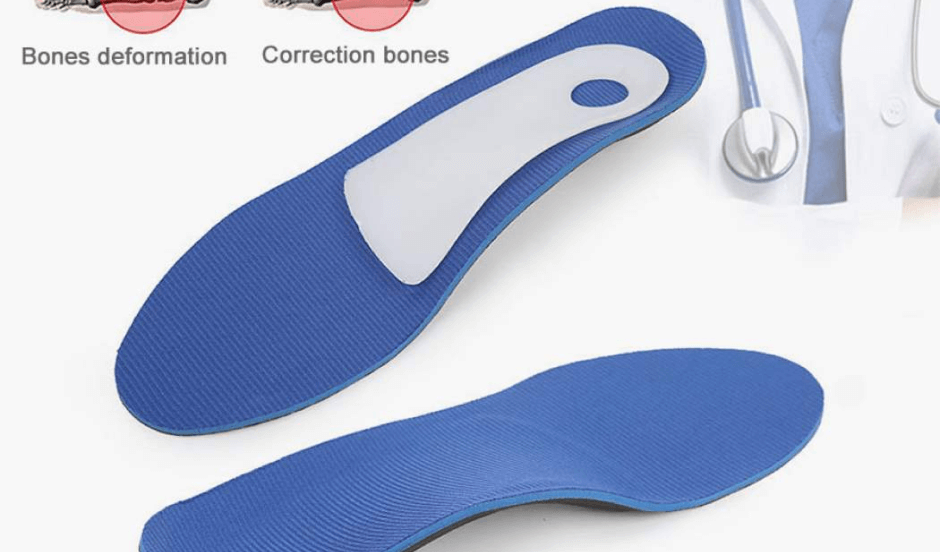
From TV ads to shopping mall kiosks and foot specialty stores, there seems to be an endless supply of orthotic insoles to cure everything from bunions to back pain. The idea of foot orthotics is to realign your feet, changing the way they come in contact with the ground. That in turn translates up your body’s kinetic chain, affecting your gait and posture.

You feet form a base for your entire body, working hard to maintain balance, facilitate locomotion, and provide stability during walking, running, jumping and landing. Foot alignment affects the relationships between your ankles, knees, hips, pelvis and spine, all links in the kinetic chain. If your base of support is out of alignment, it impacts the entire chain, all the way to the neck and head.
You stabilize your body by tapping into your senses to gather information from the environment. In particular, postural stability relies on vision, the vestibular system and information from sensory nerves on the soles of your feet.
The functions of your feet are to:
When standing or locomoting in an upright position, your feet send messages to your central nervous system about your body’s position relative to its surrounding environment.

People with flat feet (pes planus) or those with abnormally high arches (pes cavus) may experience foot pronation, where the foot and ankle roll inward. This can cause the knees to collapse inward, which in turn affects the angle at which the femur (thigh bone) meets the pelvis. Misalignment along the entire kinetic chain reduces pelvic stability, causing the pelvis to tilt forward and putting pressue on the low back. As a result, people with poor foot alignment often experience joint problems, back pain and deficits in postural stability.
Orthotics designed to realign the foot and prevent pronation may help restore optimal alignment and improve postural stability along the entire kinetic chain.

Over time, unstable posture can result in problems that increase your risk of injury and cause painful symptoms. Common symptoms include:

Orthotic insoles are not a panacea for correcting postural instability, but they may be prescribed for certain diagnosable conditions, including:
Postural insoles are most effective when combined with other approaches for correcting alignment and redistributing force loads. They should be prescribed only by a reputable specialist, and only after a comprehensive diagnosis.
The sports medicine team at NYDNR combines the most advanced technologies with expertise and innovative treatment methods to diagnose and correct postural instability. Some of our technologies include:
Motion capture video
Force plate technology
Virtual reality feedback
At NYDNR, we rely on scientific methodology to get to the root of each patient’s pain, and resolve it in ways that restore function and improve overall quality of life.
At NYDNR, we rely on scientific methodology to get to the root of each patient’s pain, and resolve it in ways that restore function and improve overall quality of life. Our practice features the top human performance and motion analysis lab, and the most technologically advanced rehabilitation clinic in the country.
Dr. Lev Kalika is a world-recognized expert in musculoskeletal medicine. with 20+ years of clinical experience in diagnostic musculoskeletal ultrasonography, rehabilitative sports medicine and conservative orthopedics. In addition to operating his clinical practice in Manhattan, he regularly publishes peer-reviewed research on ultrasound-guided therapies and procedures. He serves as a peer reviewer for Springer Nature.
Dr. Kalika is an esteemed member of multiple professional organizations, including: